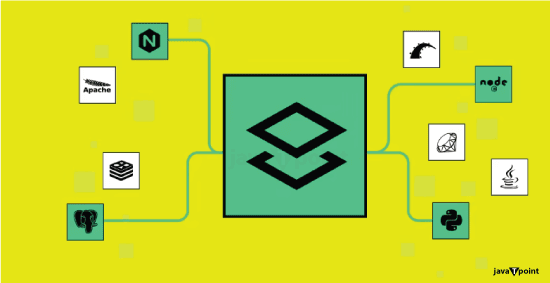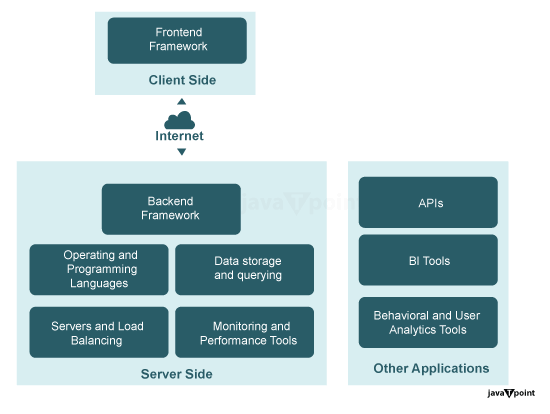What is a Tech Stack: Examples, Components, and Diagrams
In the short-paced international of technology, constructing software applications is a complicated enterprise. Developers rely on a combination of gear, languages, and frameworks to create practical and person-friendly programs. This mixture, known as a "tech stack," makes paperwork the backbone of any software challenge. In this exploration of tech stacks, we will delve into what they may be, study some commonplace examples, destroy their additives, and visualize them with diagrams.
What Is a Tech Stack?
A tech stack, brief for "era stack," refers to a collection of software program tools, programming languages, libraries, and frameworks that paint collectively to construct and run an internet or mobile utility. Think of it as constructing blocks builders use to assemble a virtual product. Tech stacks are like recipes in a kitchen, wherein every factor has a selected function and contributes to the final results.
Why Are Tech Stacks Important?
Understanding tech stacks is crucial for numerous motives:
- Efficiency: A nicely chosen tech stack can drastically boost development. Developers can leverage pre-constructed additives and libraries, decreasing the need to reinvent the wheel.
- Compatibility: A harmonious tech stack ensures that all components work seamlessly together. This reduces the probability of bugs and compatibility troubles.
- Scalability: The right tech stack enables programs to grow and cope with multiplied consumer hundreds without requiring a whole overhaul.
- Cost-effectiveness: Choosing the correct gear can avoid unnecessary fees and reduce improvement time.
- Flexibility: A versatile tech stack allows builders to evolve to convert requirements and incorporate new capabilities more effortlessly.
Common Tech Stack Examples
Tech stacks can vary drastically depending on the character of the venture, but a few famous examples consist of the following:
LAMP Stack
The LAMP stack is a classic choice for internet development and stands for:
- Linux: The operating machine on which the utility runs.
- Apache: The web server that handles HTTP requests.
- MySQL: The relational database for storing and managing facts.
- PHP: The programming language used for server-side scripting.
LAMP is open-source and extensively used for creating dynamic net packages consisting of content material control systems like WordPress.
MEAN Stack
The MEAN stack is any other famous desire, especially for building JavaScript-heavy web applications. It consists of:
- MongoDB: A NoSQL database for flexible records garage.
- Express.Js: A web application framework for building strong APIs.
- AngularJS (or Angular): A front-stop framework for creating dynamic person interfaces.
- Node.Js: A runtime surrounding for executing JavaScript on the server facet.
The MEAN stack is thought for its complete JavaScript ecosystem, making it an unbroken preference for builders who work broadly speaking with JavaScript.
MERN Stack
Like the MEAN stack, the MERN stack swaps out Angular for React and some other effective JavaScript library for constructing user interfaces. It consists of:
- MongoDB: The NoSQL database.
- Express.Js: The net software framework.
- React The JavaScript library for constructing user interfaces.
- Node.Js: The runtime surroundings.
The MERN stack is favoured by builders who opt for React's component-primarily based structure for building interactive net applications.
Ruby on Rails
Ruby on Rails, often clearly called Rails, is a web software framework that simplifies internet development. It pairs with:
- Ruby: A dynamic, object-orientated programming language.
- Rails: The web framework itself, constructed on top of Ruby.
- PostgreSQL: An effective open-source relational database.
Ruby on Rails is known for its "convention over configuration" philosophy, which streamlines improvement by promoting great practices.
These are only a few examples, and limitless other tech stacks are tailor-made to specific use instances and possibilities. The desire for a tech stack depends on the venture's necessities, the crew's expertise, and scalability needs.
Components of a Tech Stack
Now that we have visible some examples of tech stacks, it allows us to dissect the vital additives that make up a typical tech stack:

- Operating System: The basis of the stack, the working gadget (OS), determines the surroundings wherein the utility will run. Common choices consist of Linux distributions, Windows Server, and macOS.
- Web Server: The web server is liable to cope with incoming HTTP requests from customers' browsers and serve internet pages. Popular net servers include Apache, Nginx, and Microsoft Internet Information Services (IIS).
- Database: Databases are in which your utility shops and retrieves information. There are numerous types of databases, including:
- Relational Databases: These use-based schemas and are ideal for facts with complicated relationships. Examples encompass MySQL, PostgreSQL, and Microsoft SQL Server.
- NoSQL Databases: These databases are schema-much less and appropriate for handling unstructured or semi-dependent data. MongoDB, Cassandra, and Redis are a few popular alternatives.
- Backend Programming Language: The backend language is liable for server-aspect common sense and processing. Different languages are suitable for different functions:
- Python: Known for its simplicity and readability, Python is utilized in frameworks like Django and Flask for net development.
- JavaScript: Widely used for front and backend improvement, Node.Js permits developers to use the same language throughout the stack.
- Ruby: Ruby is the language behind Ruby on Rails, known for its developer-pleasant syntax and conventions.
- PHP: PHP powers many internet applications and is generally used with frameworks like Laravel and Symfony.
- Web Framework: In web development, a framework is a pre-constructed structure that offers a foundation for building applications. Frameworks like Django (Python), Ruby on Rails (Ruby), and Express.Js (JavaScript) save developers time by presenting not unusual functions and conventions.
- Frontend Framework or Library: The frontend framework or library is answerable for growing the person interface and handling person interactions. Common selections consist of:
- React: A JavaScript library for constructing personal interfaces developed via Facebook.
- Angular: A complete JavaScript framework advanced via Google.
- Vue.Js: A progressive JavaScript framework that is known for its simplicity.
- Runtime Environment: For JavaScript-primarily based stacks like MEAN and MERN, Node.Js serves because of the runtime surroundings for executing JavaScript code on the server aspect.
- Version Control: Version control systems like Git are crucial for monitoring changes to the codebase, collaborating with crew contributors, and ensuring code integrity.
- Hosting and Deployment: Once your software is prepared, you want a platform to host and deploy it. Popular website hosting options include cloud offerings like Amazon Web Services (AWS), Microsoft Azure, Google Cloud Platform (GCP), and platform-as-a-carrier carriers like Heroku and Netlify.
- Additional Tools and Libraries: Depending on the unique necessities of your venture, you could want diverse tools and libraries for obligations together with authentication, records visualization, and checking out.
Visualizing a Tech Stack with Diagrams
Understanding a tech stack will become extra intuitive while you see it visually. Let's create a simplified diagram of an average net application tech stack:

In this diagram:
- The Operating System bureaucracy is the bottom layer.
- The Web Server, in this case, Apache, handles incoming HTTP requests.
- The Backend Programming Language, Python, runs server-side code.
- The Web Framework, Django, gives shape and gear for internet development.
- The Database, PostgreSQL, shops and manages statistics.
- The Frontend Framework or Library, React, builds the user interface.
- The Runtime Environment, Node.Js, allows for server-aspect JavaScript (for MERN stack).
This is a simplified illustration, and international tech stacks may be more complex. Some programs may have microservices, extra layers for caching or load balancing, and various tools for testing and monitoring.
Choosing the Right Tech Stack
Selecting an appropriate tech stack for your venture is an important decision. Here are a few factors to keep in mind:
- Project Requirements: Understand the specific wishes of your mission. Does it require actual-time features, scalability, or data analysis? Your tech stack must align with these requirements.
- Team Expertise: Consider the understanding of your improvement crew. Using some technology they're familiar with can lead to quicker development and less mistakes.
- Scalability: Think approximately the destiny. Will your application need to handle improved person hundreds or extra capabilities? Choose a stack that can scale.
- Community and Support: Check the supply of documentation and online groups and assist with the technologies you plan to use.
- Budget: Consider the cost implications of your tech stack. Some technologies have licensing costs, while others are open-supply.
- Security: Assess the safety features and first-rate practices associated with your selected stack, especially if your application handles sensitive information.
- Time to Market: If pace is essential, pick a tech stack that lets in for rapid improvement.
- Flexibility: Ensure your selected stack can adapt to converting requirements and technological improvements.
- Compatibility: Make positive all additives of your tech stack paintings nicely collectively to avoid integration problems.
Evolving Tech Stacks
Tech stacks aren't static entities. They evolve as generation advances and new tools emerge. Staying up-to-date with industry tendencies and frequently comparing your tech stack assist you in remaining competitive and green.
Here are a few trends and issues for the future of tech stacks:
Microservices Architecture: Microservices wreck down applications into small, impartial services that communicate through APIs. This technique gives flexibility, scalability, and less complicated renovation.
Serverless Computing: Serverless computing lets builders focus attention on writing code without coping with servers. Cloud providers like AWS Lambda and Azure Functions provide serverless platforms.
Progressive Web Apps (PWAs): PWAs combine net and mobile programs, offering more attractive and responsive consumer enjoyment. They're built using net technologies like HTML, CSS, and JavaScript.
Artificial Intelligence (AI) and Machine Learning (ML): Integrating AI and ML into tech stacks allows applications to make statistics-driven choices, automate obligations, and offer wise suggestions.
Blockchain: Blockchain generation is gaining traction for applications requiring acceptance as true and transparent. It's utilized in finance, delivery chain management, and identity verification.
Conclusion
Tech stacks are the backbone of modern-day software program development, serving as the foundation on which virtual applications are built. You could make knowledgeable choices that align with your venture's dreams and necessities by providing information on the additives and issues that pass into choosing a tech stack. Additionally, keep in mind that tech stacks aren't static; they evolve aside from technology trends.
|


 For Videos Join Our Youtube Channel: Join Now
For Videos Join Our Youtube Channel: Join Now










